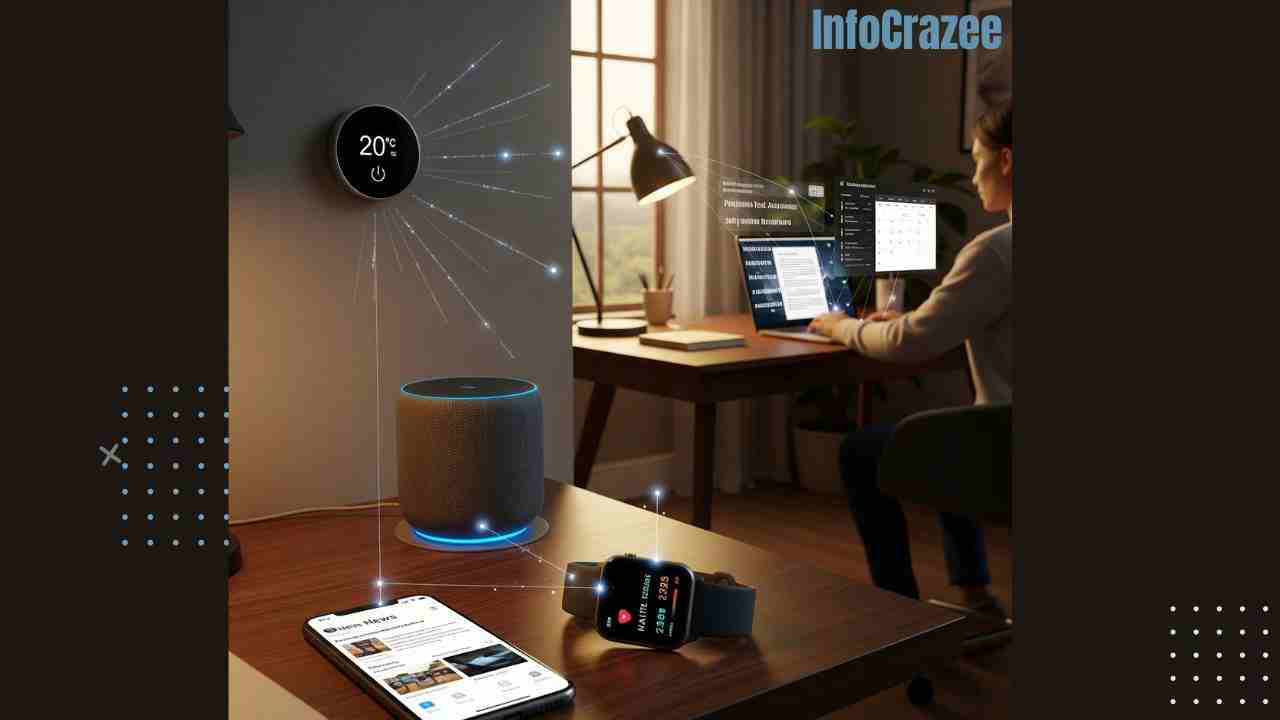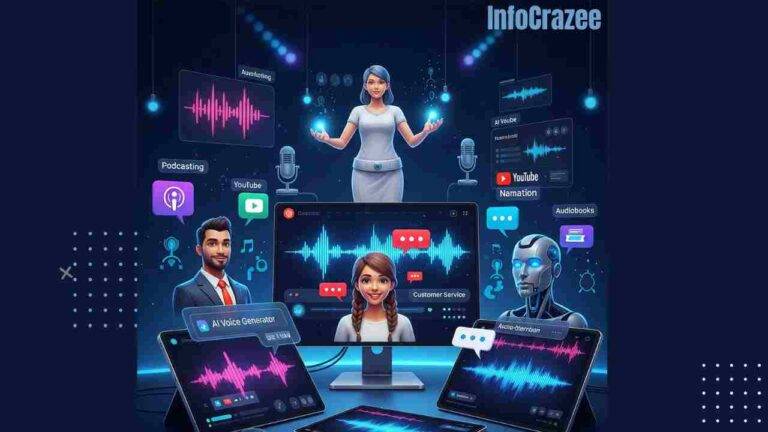How AI Is Quietly Powering Your Daily Apps and Devices
Artificial Intelligence (AI) has become an invisible force woven into the fabric of our daily lives, seamlessly enhancing the apps and devices we rely on. From smartphones to smart home systems, AI is working behind the scenes to make our experiences more intuitive, efficient, and personalized. In 2025, as AI continues to evolve, its subtle yet powerful influence is transforming how we interact with technology. Here’s a look at how AI is quietly powering your everyday apps and devices.
1. Personalized Content and Recommendations
AI algorithms are the backbone of the personalized experiences you encounter daily:
- Streaming Services: Platforms like Netflix and Spotify use AI to analyze your viewing or listening history, predicting content you’ll love. Machine learning models process millions of data points, from genre preferences to watch time, to curate tailored playlists or show suggestions.
- Social Media: Apps like X and Instagram leverage AI to prioritize posts, stories, and ads based on your interactions, ensuring your feed feels uniquely yours.
- Impact: These AI-driven recommendations save time and enhance engagement, though they raise concerns about filter bubbles and data privacy.
2. Voice Assistants and Natural Language Processing
Voice-activated devices have become ubiquitous, and AI is what makes them so responsive:
- Smart Speakers and Phones: Siri, Google Assistant, and Alexa use natural language processing (NLP) to understand and respond to your commands, from setting reminders to controlling smart home devices. In 2025, advancements in NLP enable more natural, context-aware conversations.
- Real-Time Translation: Apps like Google Translate use AI to provide instant translations, breaking down language barriers during travel or communication.
- Impact: Voice assistants streamline tasks, but their always-listening nature sparks debates about surveillance and data security.
3. Smart Cameras and Computer Vision
AI-powered computer vision is enhancing the cameras in your devices:
- Smartphone Photography: Features like night mode, portrait effects, and automatic scene detection rely on AI to process images in real time. For instance, Apple’s iPhone and Google’s Pixel use neural networks to optimize lighting and focus.
- Security Systems: Home devices like Ring doorbells use AI to detect motion, recognize faces, and differentiate between people and pets, sending precise alerts to your phone.
- Impact: Enhanced visuals and security improve user experience, though facial recognition raises ethical concerns around bias and privacy.
4. Predictive Text and Autocorrect
Every time you type, AI is at work:
- Messaging Apps: Tools like Gmail’s Smart Compose or WhatsApp’s predictive text use AI to suggest words or entire sentences, learning from your typing patterns to speed up communication.
- Keyboards: Apps like Gboard employ machine learning to refine autocorrect and predict emojis, making texting faster and more accurate.
- Impact: These features boost productivity but can occasionally misinterpret intent, leading to humorous or frustrating errors.
5. Navigation and Location-Based Services
AI powers the navigation tools you rely on daily:
- Maps and GPS: Google Maps and Waze use AI to analyze traffic data, predict delays, and suggest optimal routes in real time. Machine learning models process inputs from millions of users to improve accuracy.
- Ride-Sharing Apps: Uber and Lyft leverage AI to match drivers with riders, optimize pricing based on demand, and predict pickup times.
- Impact: AI-driven navigation saves time and fuel, though reliance on real-time data raises concerns about location tracking.
6. Health and Fitness Tracking
Wearables and health apps are increasingly AI-driven:
- Fitness Trackers: Devices like Fitbit and Apple Watch use AI to analyze heart rate, sleep patterns, and activity levels, providing personalized health insights. In 2025, some wearables predict potential health issues, like irregular heart rhythms.
- Mental Health Apps: Tools like Woebot use AI chatbots to offer cognitive behavioral therapy, adapting responses based on user input.
- Impact: AI enhances wellness but requires strict safeguards to protect sensitive health data.
7. Smart Home Automation
AI makes your home smarter and more efficient:
- Thermostats and Lighting: Devices like Nest and Philips Hue use AI to learn your habits, adjusting temperature or lighting to save energy while maintaining comfort.
- Appliances: AI-powered refrigerators track inventory and suggest recipes, while robotic vacuums like Roomba map your home for efficient cleaning.
- Impact: Automation simplifies daily tasks, but interconnected devices increase cybersecurity risks.
The Bigger Picture
In 2025, AI’s role in daily apps and devices is both pervasive and subtle, often operating unnoticed until something goes wrong. Its ability to process vast datasets, learn from user behavior, and make real-time decisions drives convenience and innovation. However, challenges remain:
- Privacy Concerns: AI’s reliance on personal data requires transparent policies and robust encryption to maintain trust.
- Ethical Considerations: Bias in AI algorithms, such as in facial recognition or content recommendations, demands ongoing scrutiny.
- Accessibility: Ensuring AI benefits are available to all, not just tech-savvy users, is critical for equitable adoption.
Looking Ahead
As AI continues to evolve, its integration into daily apps and devices will deepen, with advancements in edge AI (processing data on-device) and federated learning (enhancing privacy) leading the way. By 2030, expect even more seamless, intuitive experiences, from AI-driven augmented reality glasses to predictive health interventions.
For consumers, understanding AI’s role empowers better decision-making about the tools you use. Embrace the convenience, but stay informed about privacy settings and advocate for ethical AI development. The future is already here, quietly powering your world—one app, one device at a time.






